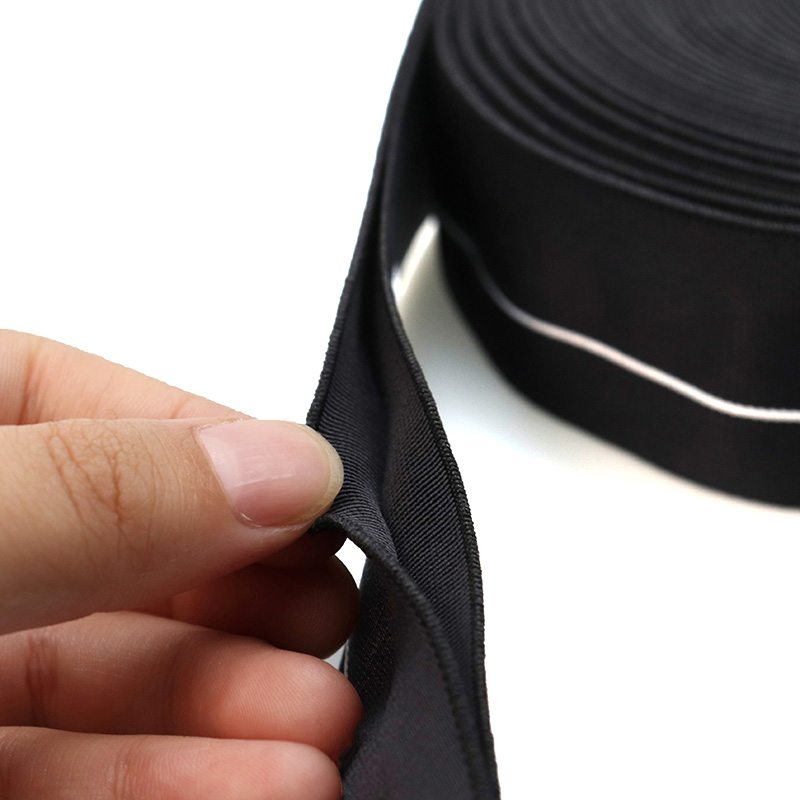Industry
 By Admin
By Admin
Differences Between Jacquard Elastic And Printed Elastic Bands
Understanding the differences between jacquard elastic and printed elastic bands is essential. Both types serve important roles in industries ranging from apparel to upholstery, but their construction, appearance, and performance vary in meaningful ways. Whether you are selecting materials for clothing, upholstery webbing elastic, or elastic tie down cords, knowing these distinctions helps in making the right choice for your project. Additionally, certain features like an anti slip waistband may be more suitable depending on the elastic type used.

Jacquard elastic is created using a weaving process where the design or pattern is woven directly into the elastic band. This method allows for intricate, multi-colored designs that are integrated with the structure of the band itself. The weaving technique results in a durable, flexible elastic that maintains its pattern and integrity even after repeated stretching and washing. This quality makes jacquard elastic a popular choice for applications like upholstery webbing elastic, where strength and durability are important.
In contrast, printed elastic bands are made by applying designs onto the surface of a plain elastic through printing methods such as screen printing or heat transfer. The patterns or logos sit on top of the fabric, which can sometimes wear off or fade over time with use and washing. While printed elastic offers more straightforward and cost-effective customization options, it may not provide the same level of durability as jacquard elastic, especially in heavy-use applications like elastic tie down cords or in garments requiring a strong anti slip waistband feature.
One of the main benefits of jacquard elastic is its ability to combine aesthetic appeal with practical performance. Because the design is woven into the fabric, it will not peel or crack like some printed elastics might. This makes jacquard elastic particularly suited for applications where both appearance and functionality are critical, such as upholstery webbing elastic in furniture that needs to withstand constant pressure and stretching. The integrated design also means that the elastic can maintain an anti slip waistband feature in clothing, which helps garments stay in place without additional additives or coatings.
Printed elastic bands are often preferred when vibrant, full-color graphics or custom logos are desired without the complexity of weaving. This can be advantageous for products like elastic tie down cords used in packaging or sporting goods, where branding or simple patterns are required. However, the surface printing on these bands means they may be less resistant to abrasion and stretching, which can impact their lifespan and the visibility of the printed design.
When comparing the stretch and recovery properties, jacquard elastic generally offers better elasticity and resilience due to its woven construction. This makes it a reliable choice for uses such as upholstery webbing elastic, which often needs to support weight and return to its original shape after use. Meanwhile, printed elastic may offer sufficient elasticity for everyday apparel but might not perform as well under heavy strain, which is something to consider when using elastic tie down cords in demanding conditions.
Another aspect to consider is the feel and texture of the bands. Jacquard elastic tends to have a slightly thicker and more textured surface because of the woven patterns, which can add to the durability but might feel less smooth against the skin. Printed elastic, being essentially a plain elastic base with a printed surface, generally has a smoother texture but may lack the reinforced strength necessary for applications requiring an anti slip waistband or heavy-duty support.
Cleaning and maintenance also differ between the two types. Jacquard elastic's woven design is generally more resilient to washing and wear, maintaining its elasticity and appearance after multiple cycles. This durability makes it well-suited for upholstery webbing elastic or activewear waistbands with an anti slip feature. Printed elastic requires more careful handling to preserve the printed design, especially when used in products like elastic tie down cords that may be exposed to harsh environments or frequent handling.
In summary, jacquard elastic and printed elastic bands each have unique advantages depending on the intended application. Jacquard elastic offers durability, integrated design, and strong elasticity, making it ideal for uses such as upholstery webbing elastic or garments requiring an anti slip waistband. Printed elastic provides an economical and flexible option for vibrant designs and branding on items like elastic tie down cords, though it may sacrifice some durability and longevity. Understanding these differences helps manufacturers, designers, and consumers select the right elastic for their specific needs.
Choosing between jacquard elastic and printed elastic bands involves balancing appearance, durability, and performance. Whether the focus is on upholstery webbing elastic, elastic tie down cords, or ensuring garments have an effective anti slip waistband, knowing how each elastic type performs in these areas will advance to better outcomes. Both options have their place in the market, and selecting the right one depends on the particular demands of the product and its usage environment.



 English
English Español
Español عربى
عربى Tiếng Việt
Tiếng Việt

